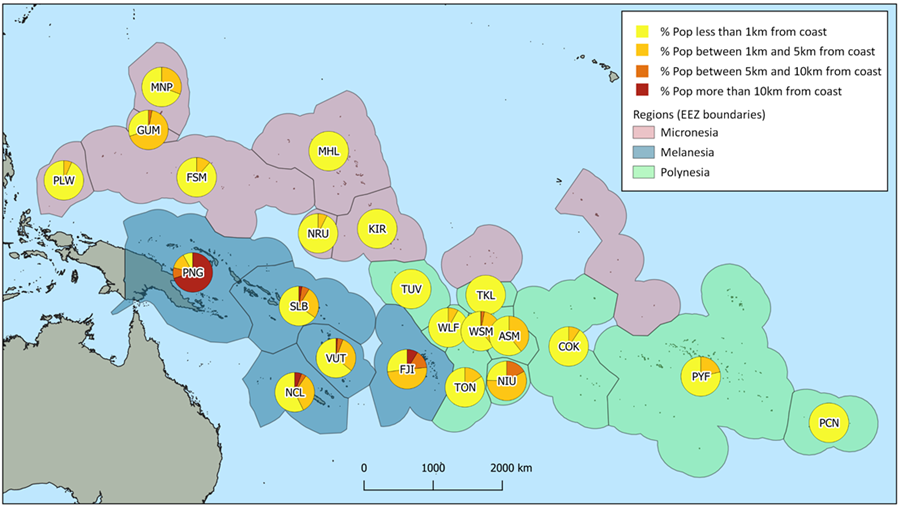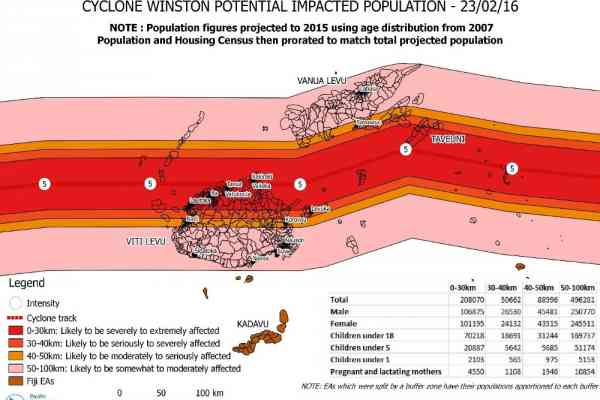A collaborative project between the Pacific Community (SPC), WorldFish and the University of Wollongong has produced the first detailed population estimates of people living close to the coast in the 22 Pacific Island Countries and Territories (PICTs).
A recently published paper, titled “Coastal proximity of populations in 22 Pacific Island Countries and Territories” details the methodology used to undertake the analysis and presents the findings. The project contributes to filling large gaps in understandings of the exposure and vulnerability of people in coastal zones (in the Pacific as well as globally) which has a wide range of implications including food security and disaster management.
Three coastal zones at 1, 5, and 10 km were mapped onto every populated island for each PICT. People residing within 1 km were considered to live on the coast, those within 5 km included those who could still easily walk to the coast and 10 km, those who interact with coastal communities (e.g. in terms of access to markets or other activities) and who would be able to easily get to the coast with some form of transport.
In the study, a combination of national census data and globally available data sources where used. National census data vary in detail among PICTs: the 2016 national census in Tonga gathered georeferenced household data, but the vast majority of PICTs have older, less reliable and precise information. The analysis explores differences in population estimates using census data and global models, and develops a decision tree to guide future analyses based on the availability and method of national surveys.
Results:
Regional patterns in the proximity of Pacific people to the coast are dominated by Papua New Guinea. Overall, approximately half the population of the Pacific resides within 10 km of the coast but this jumps to 97% when Papua New Guinea is excluded. A quarter of Pacific people live within 1 km of the coast, but without PNG this increases to about half. Excluding PNG, 90% of Pacific Islanders live within 5 km of the coast. All of the population in the coral atoll nations of Tokelau and Tuvalu live within a km of the ocean.
The published paper is available here: https://doi.org/10.1371/journal.pone.0223249 and more information about the project is available here: https://sdd.spc.int/mapping-coastal
Media contact:
Phil Bright, GIS, Innovation and Dissemination Lead, SPC Statistics for Development Division | +687 262000 | [email protected]
Professor Neil Andrew, Australian National Centre for Ocean Resources and Security, University of Wollongong, Australia | +61 2 4252 8921 | [email protected]
About Us:
The Pacific Community has been supporting sustainable development in the Pacific, through science, knowledge and innovation since 1947. It is the principal intergovernmental organization in the region, owned and governed by its 26 member countries and territories.

